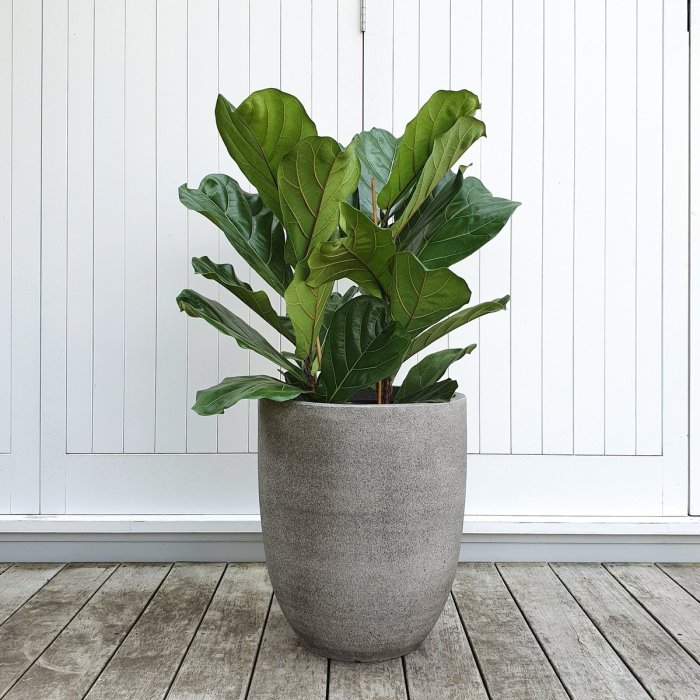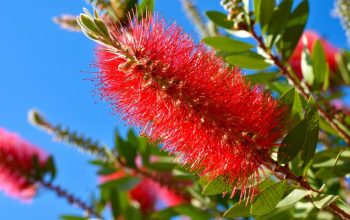Popular Potted Plants

Best plants to plant in pots – Choosing the right potted plants can significantly enhance the aesthetic appeal of any indoor or outdoor space. The selection process should consider factors such as available sunlight, watering capabilities, and the overall desired aesthetic. This section will explore popular choices for beginners, low-maintenance options for busy individuals, and vibrant flowering plants to brighten up any environment.
Popular Potted Plants for Beginners
The following table lists ten popular potted plants suitable for beginners, detailing their sunlight requirements and watering needs. These plants are generally resilient and forgiving, making them ideal for those new to indoor gardening.
| Plant Name | Sunlight | Watering Frequency | Special Considerations |
|---|---|---|---|
| Spider Plant (Chlorophytum comosum) | Bright, indirect light | Water when the top inch of soil is dry | Tolerates some neglect; propagates easily from “spiderettes” |
| Snake Plant (Sansevieria trifasciata) | Low to bright indirect light | Water sparingly; allows soil to dry completely between waterings | Very drought-tolerant; prefers well-draining soil |
| ZZ Plant (Zamioculcas zamiifolia) | Low to bright indirect light | Water infrequently; allows soil to dry completely between waterings | Extremely drought-tolerant; can tolerate low-light conditions |
| Pothos (Epipremnum aureum) | Bright, indirect light | Water when the top inch of soil is dry | Tolerates low light; can be grown in hanging baskets |
| Peace Lily (Spathiphyllum wallisii) | Low to medium indirect light | Water when the soil is slightly dry; prefers consistently moist soil | Droops dramatically when thirsty; prefers high humidity |
| Aloe Vera (Aloe barbadensis miller) | Bright, direct light | Water sparingly; allows soil to dry completely between waterings | Succulent; needs well-draining soil to prevent root rot |
| Cast Iron Plant (Aspidistra elatior) | Low to medium indirect light | Water moderately; allows soil to dry slightly between waterings | Extremely tolerant of neglect; thrives in low-light conditions |
| Chinese Evergreen (Aglaonema) | Low to medium indirect light | Water when the top inch of soil is dry | Prefers consistently moist soil but avoid overwatering |
| Haworthia | Bright, indirect light | Water sparingly; allows soil to dry completely between waterings | Succulent; prefers well-draining soil to prevent root rot |
| Jade Plant (Crassula ovata) | Bright, direct light | Water sparingly; allows soil to dry completely between waterings | Succulent; needs well-draining soil to prevent root rot |
Low-Maintenance Potted Plants for Busy Individuals
Individuals with busy schedules often benefit from low-maintenance plants that require minimal care. These plants are generally drought-tolerant and can withstand periods of neglect.
- Snake Plant: Requires infrequent watering and tolerates low light conditions. A potential challenge is overwatering, which can lead to root rot.
- ZZ Plant: Extremely drought-tolerant and can withstand low light. The main challenge is ensuring adequate drainage to prevent root rot.
- Cast Iron Plant: Tolerates low light, infrequent watering, and temperature fluctuations. It is remarkably resilient but can be susceptible to pests if neglected for extended periods.
- Haworthia: A succulent requiring minimal watering and bright, indirect light. Overwatering is the primary challenge, leading to root rot.
- Jade Plant: Another succulent, it thrives in bright light and infrequent watering. Overwatering and insufficient light are potential challenges.
Vibrant Flowering Potted Plants
Flowering potted plants add a burst of color and vibrancy to any indoor or outdoor space. Careful consideration of blooming seasons and growing conditions is crucial for successful cultivation.
- African Violet (Saintpaulia ionantha): Blooms throughout the year with proper care, producing delicate, velvety flowers. They prefer bright, indirect light and consistently moist (but not soggy) soil.
- Orchids (Orchidaceae): A diverse family with varying blooming seasons and care requirements. Generally, they prefer bright, indirect light and high humidity. Specific watering needs vary depending on the orchid species.
- Christmas Cactus (Schlumbergera bridgesii): Known for its stunning blooms during the winter holidays. It thrives in bright, indirect light and requires consistently moist soil, especially during the blooming period.
Choosing the Right Pot
Selecting the appropriate pot is crucial for the health and vitality of potted plants. The pot’s material, size, and drainage system all significantly influence a plant’s ability to thrive. Careful consideration of these factors will contribute to a plant’s success.
Potting Material Properties and Their Effects on Plant Health
Different potting materials possess unique properties that affect a plant’s growth and well-being. Terracotta, plastic, and ceramic pots each offer advantages and disadvantages. The choice depends on the specific plant’s needs and the grower’s preferences.
| Potting Material | Pros | Cons |
|---|---|---|
| Terracotta | Porous material allows for good air circulation and drainage, preventing root rot; aesthetically pleasing; allows for even soil moisture. | Can dry out quickly, requiring more frequent watering; prone to cracking and breaking; can be heavy. |
| Plastic | Lightweight and durable; inexpensive; retains moisture well, reducing watering frequency; available in various sizes and colors. | Does not allow for air circulation as well as terracotta; can overheat in direct sunlight; less aesthetically pleasing than terracotta or ceramic. |
| Ceramic | Aesthetically pleasing; durable; retains moisture well; comes in various designs and glazes. | Can be expensive; heavy; can crack or break if dropped; glazed pots may not allow for sufficient air circulation. |
Pot Size Selection for Different Plant Types and Growth Stages
Proper pot size is paramount for optimal plant growth. An improperly sized pot can lead to stunted growth, rootbound plants, or excessive watering issues. The size should be appropriate for the plant’s current size and its expected growth rate.
The following examples illustrate the importance of appropriate pot sizing:
- Seedlings and small plants: Start with small pots (e.g., 2-4 inch diameter) to avoid overwatering and provide ample space for initial root development. As the plant grows, it can be transplanted into progressively larger pots.
- Mature plants: Larger, established plants require significantly larger pots to accommodate their extensive root systems. Selecting a pot that is too small will restrict root growth, leading to nutrient deficiencies and stunted growth.
- Fast-growing plants: Fast-growing plants, such as certain vines or flowering plants, may need to be repotted more frequently than slow-growing plants to accommodate their rapid growth.
- Slow-growing plants: Slow-growing plants can remain in the same pot for longer periods without exhibiting signs of rootbound conditions.
Drainage Hole Selection to Prevent Root Rot, Best plants to plant in pots
Adequate drainage is crucial to prevent root rot, a common problem caused by overly saturated soil. Root rot occurs when roots are deprived of oxygen due to prolonged exposure to excessive moisture.
Choosing the best plants to plant in pots depends on several factors, including light and space. However, the right potting mix is crucial for success, and selecting high-quality indoor plant potting soil ensures proper drainage and nutrient retention. This, in turn, allows your chosen potted plants to thrive and flourish, making your indoor garden a beautiful and healthy space.
Pots should always have drainage holes in the base to allow excess water to escape. Examples of pots with good drainage include those with multiple, generously sized holes, while pots without drainage holes or with very small holes are examples of poor drainage systems. Poor drainage can lead to waterlogged soil, fungal growth, and eventual plant death.
Creating Stunning Potted Plant Displays: Best Plants To Plant In Pots

The art of arranging potted plants extends beyond simply placing them in containers. Careful consideration of plant selection, pot styles, and overall design principles can transform a balcony, patio, or indoor space into a vibrant and visually appealing oasis. This section explores various approaches to creating stunning potted plant displays.
Three Potted Plant Arrangement Designs
Three distinct arrangements showcase the versatility of potted plants in diverse settings. The first, a vibrant balcony display, features a mix of trailing and upright plants. Trailing petunias in terracotta pots cascade over the edge of a railing, complemented by upright geraniums in matching pots, creating a colorful and dynamic display. The overall aesthetic is one of lively abundance, perfect for a sunny balcony.The second arrangement, designed for a shaded patio, utilizes a more subdued palette.
Hostas in large, dark-colored ceramic pots serve as anchor plants, their lush foliage contrasting with the delicate blooms of impatiens planted in smaller, lighter-colored pots interspersed among them. This arrangement prioritizes texture and subtle color variation, creating a tranquil and peaceful atmosphere.Finally, an indoor arrangement for a bright corner employs a vertical approach. A tall, slender snake plant in a minimalist ceramic pot forms the centerpiece, flanked by smaller succulents in various textured pots arranged on different levels using tiered plant stands.
The aesthetic here is modern and minimalist, emphasizing clean lines and textural contrast.
Tips for Creating Visually Appealing Potted Plant Displays
Careful planning enhances the visual impact of any potted plant display. The following tips guide the creation of aesthetically pleasing arrangements.
- Vary Plant Heights: Incorporating plants of varying heights creates visual interest and depth. Taller plants serve as focal points, while shorter plants fill in gaps and add texture.
- Coordinate Plant Colors: Consider the colors of the plants’ foliage and flowers. A harmonious color scheme creates a unified look, while contrasting colors can add excitement.
- Choose Appropriate Pot Styles: The style of the pots should complement the plants and the overall aesthetic of the space. Consider materials, shapes, and sizes.
- Group Plants Strategically: Grouping plants together creates a sense of cohesion and visual impact. Consider grouping plants with similar needs together for easier care.
- Consider the Background: The backdrop against which the plants are displayed can significantly impact their visual appeal. A plain wall allows the plants to stand out, while a busy background might require a more cohesive arrangement.
Three Themed Potted Plant Arrangements
Three distinct themes illustrate how to select plants based on desired aesthetic and environmental conditions.
Tropical Theme
This theme evokes lush, humid environments. Suitable plants include:
- Bird of Paradise
- Caladiums
- Philodendrons
- Bromeliads
- Orchids
The arrangement should emphasize vibrant colors and lush foliage, creating a sense of tropical abundance.
Mediterranean Theme
This theme evokes the sun-drenched landscapes of the Mediterranean. Suitable plants include:
- Rosemary
- Lavender
- Olive trees (dwarf varieties)
- Thyme
- Fuchsia
The arrangement should use terracotta pots and emphasize drought-tolerant plants with silvery or grayish-green foliage and purple or blue flowers.
Desert Theme
This theme recreates the arid beauty of desert landscapes. Suitable plants include:
- Cacti (various types)
- Succulents (various types)
- Yucca
- Agave
- Sedum
The arrangement should use earthy-toned pots and focus on textures and shapes, creating a minimalist and rugged aesthetic.
Question Bank
What are some good plants for hanging baskets?
Trailing petunias, lobelia, fuchsia, and ivy geraniums are excellent choices for hanging baskets due to their cascading growth habits.
How often should I fertilize my potted plants?
The frequency depends on the plant and the type of fertilizer. Generally, a balanced liquid fertilizer applied every 2-4 weeks during the growing season is sufficient. Always follow the instructions on the fertilizer packaging.
How do I prevent root rot in my potted plants?
Ensure your pots have adequate drainage holes, use well-draining potting mix, and avoid overwatering. Allow the top inch or two of soil to dry out before watering again.
What should I do if my potted plant is drooping?
Drooping can indicate underwatering, overwatering, or a pest infestation. Check the soil moisture, inspect for pests, and adjust watering accordingly. If the problem persists, consider repotting or treating for pests.












